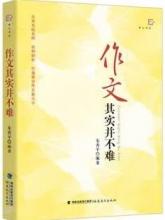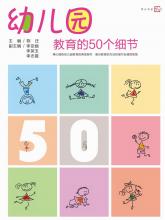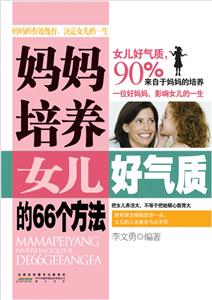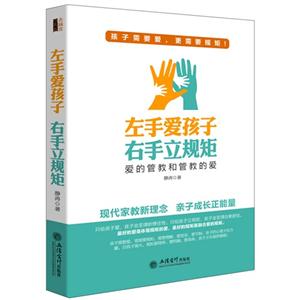化学化工基础英语

|
化学化工基础英语作者:刘庆文 开 本:16开 书号ISBN:9787122016737 定价:25.0 出版时间:2008-01-01 出版社:化学工业出版社 |
化学化工基础英语 节选
近年来,高职高专商务英语专业的毕业生进入化工企业工作时,*大的困难是缺乏化学
化工知识、化学化工英语词汇、术语等,对仪器和设备的英文表达了解也不多。为了使学生
毕业后能尽快胜任化学化工外贸工作,化学化工类高职院校商贸英语专业开设化学化工基础
英语课程十分必要,为此化学工业出版社组织编写了本教材。
本书选材来源于原版英文书籍、杂志、英语化学化工网站、国内外知名企业仪器设备样
本等资料。由三个部分20个单元构成,每个单元由课文、难点注释、词汇表、课后练习和
阅读材料组成。课文主要内容有无机化合物、有机化合物、高分子聚合物的命名和性质,精
细化工产品、分析检验仪器设备和化工生产设备的介绍,还包括相关企业和涉及化工产品的
品名、性质、储存、包装和危险品等级等内容。书后附有练习答案、课文中文参考译文、总
词汇表、化学化工常用构词、常见有机基团、常见有机化合物命名、元素名称及读法、常用
化工产品英文缩写与中文名称对照表等可供查阅。
本书内容语言精炼、知识性强、覆盖面广、难度适中,可作为高职高专商务英语专业的
补充教材,也可作为高职高专化学化工专业英语教材,还可作为从事化工商贸活动和化工生
产、管理、经营、销售等专业人员的参考资料。
本教材由天津渤海职业技术学院刘庆文担任主编,马竟担任副主编,天津渤海化工联合
进出口公司肖扬主审。其中第1~6单元由马竟编写,第7~13、15单元由刘庆文编写,第
14、16~20单元由湖南化工职业技术学院陈文娟编写,全书由刘庆文统稿。
在本书编写过程中得到了许多同志的鼎力支持和热情帮助,中国远大集团远大海外经济
投资发展有限公司副总裁南泉、天津渤海化工集团公司教育培训中心常务副主任杨厚俊同
志、天津渤海化工联合进出口公司李锡琴、王艳华和李嘉庆同志对本书的编写都给予了具体
的建议和指导,天津渤海职业技术学院的范琳老师帮助录入了许多材料,在此一并表示衷心
的感谢。
本书虽然经过多次补充和完善,但限于编者水平,书中不足之处在所难免,恳请广大读
者指正。
编者
2007年9月16日
Unit 10 Fine Chemicals
The fine chemical industry is an industry to produce fine chemical products. Fine chemi-
cal products and special chemical products are both called fine chemicals. Fine chemicals are
divided into 11 categories of pesticides, dyestuffs, coatings (including paints and inks), pig-
ments, reagents and high-purity chemicals, information chemicals (including photosensitive
materials and magnetic recording materials), food and feed additives, adhesives, catalysts
and auxiliaries, chemical drugs and chemicals for daily use.
Pesticide
Pesticide is biological, physical, or chemical agent used to kilt plants or animals that are
harmful to people in practice, the term pesticide is often applied only to chemical agents.
Various pesticides are known as insecticides, nematicides, fungicides, herbicides, and ro-
denticides, i. e. , agents primarily effective against insects, nematodes or roundworms),
fungi, weeds, and rodents, respectively.
Pesticides can be derived from plants (e. g. , pyrethrin, neem) or minerals, or they can
be chemically manufactured (e. g. , DDT, dich loro-diphenyltrichloroethane). Natural preda-
tors and other biological methods are also used. Among the biological agents, parasites and
predators feed on pests, pathogens sicken them, and pheromones interfere with insect mat-
ing. There are also genetically engineered pesticides, such as the toxin-producing Bacillus
strain used against moth larvae.
Chemical pesticides are usually contact, stomach, or fumigant poisons. Contact poisons
may have immediate or delayed effects after physical contact with a pest. Fumigants, which
may initially have the form of a solid, liquid, or gas, kill pests while in a gaseous state.
Some insecticides and fungicides are systemic, i.e. , they are translocated by a plant
from the area of application to other plant parts, where they affect only pests that feed on the
crop~. Nonselective pesticides can affect both the targeted pest and other organisms; selective
外语 大学英语 大学专业英语教材
在线阅读
- 最新内容
- 相关内容
- 网友推荐
- 图文推荐
| [高考] 2022 西安电子科技大学《软件工程》大作业答案 (2022-04-25) |
| [家长教育] 孩子为什么会和父母感情疏离? (2019-07-14) |
| [教师分享] 给远方姐姐的一封信 (2018-11-07) |
| [教师分享] 伸缩门 (2018-11-07) |
| [教师分享] 回家乡 (2018-11-07) |
| [教师分享] 是风味也是人间 (2018-11-07) |
| [教师分享] 一句格言的启示 (2018-11-07) |
| [教师分享] 无规矩不成方圆 (2018-11-07) |
| [教师分享] 第十届全国教育名家论坛有感(二) (2018-11-07) |
| [教师分享] 贪玩的小狗 (2018-11-07) |






